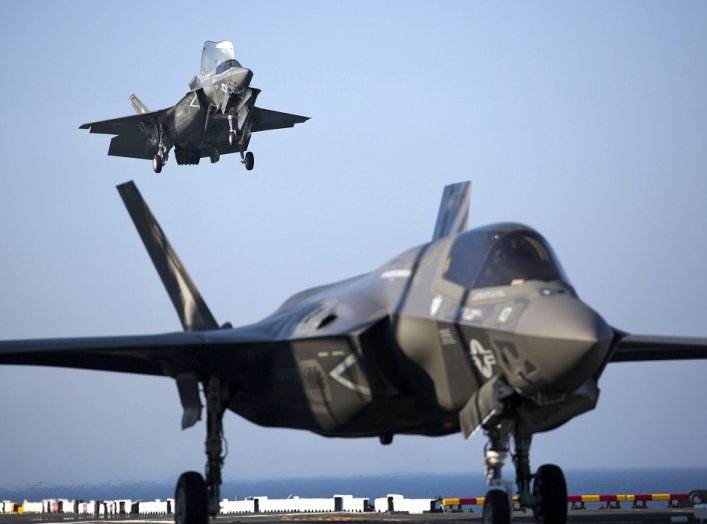
Can an F-35 be turned into a hypersonic aircraft?
News last month that Britain is boosting its hypersonic weapons program didn’t come as a surprise. Many other nations are doing it.
What caught everyone’s attention was that there are plans to rework the jet engines on the 1990s Eurofighter Typhoon—which propel the aircraft to Mach 2—into hypersonic engines that could achieve Mach 5 or faster.
Which naturally led to a question: can existing fourth- and fifth-generation fighters—which operate at speeds of around Mach 2 or less—become Mach 5 speed demons?
The technology in question is the Sabre engine from British firm Reaction Engines. Sabre aims to combine the advantages of both conventional jet engines with rocket engines. Ground tests have shown that demonstrated that the engine is capable of flying faster than Mach 3, according to Defense News.
“SABRE’s unique feature is a precooler which reduces the temperature of the incoming compressed air,” explains British defense site Forces.com. “This means the engine does not need to cope with extreme temperatures which requires special materials.”
“At high altitudes, it is a rocket, but, at lower altitudes, it works like a jet engine - sucking in and compressing air.”
One option that the RAF is considering for development of hypersonic engines is to add pre-cooler technology to the EJ-200 gas turbine engine that currently powers the Typhoon.
Alas, that isn’t the same as sticking a hypersonic engine on an older fighter.
“You shouldn’t read into that we are somehow going to achieve a hypersonic Typhoon,” said Air Chief Marshal Stephen Hillier.
There is more to developing a hypersonic aircraft than sticking a new engine in an old airframe. To turn a fourth- or fifth-generation aircraft, such as the F-16 or F-35, would invoke a variety of airframe, aerodynamic and avionics issues.
Instead, Britain’s new £10 million ($12.2 million) hypersonics program will be used to thrust Britain into the hypersonic race that is currently dominated by the U.S., Russia and China. For example, hypersonic research is expected to bear fruit in engine development for the Tempest, Britain’s planned sixth-generation fighter.
With 80 percent of Western fighters expected to be fourth-generation for the foreseeable future, hypersonic missiles are a way to keep older jets relevant. “We are working with some other people to see whether we can generate a Mach 5 capability in four years,” said Air Vice Marshal Simon Rochelle, chief of air staff capability. “There will be others pursuing higher and fast speeds … but much beyond that speed you start to change the chemical properties, the physical properties and metallic properties within the actual weapon system.”
“Part of the reason for rapidly developing high-speed weapons was to enable those aircraft to maintain their edge," Rochelle said. “There is a challenge and competition now going on at range, at speed, at pace and we have to mobilize ourselves to be ready to take that on.”
In other words, hypersonic engines won’t turn a Typhoon, F-15 or F-22 into a Mach 5 jet. Instead, hypersonic missiles will do the work. It’s the same approach that allows sixty-year-old B-52s to remain formidable weapons, by arming them with smart bombs. The platform remains the same, but the payload is updated as technology advances.


No comments:
Post a Comment